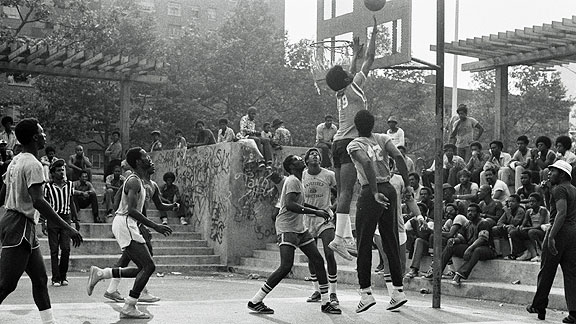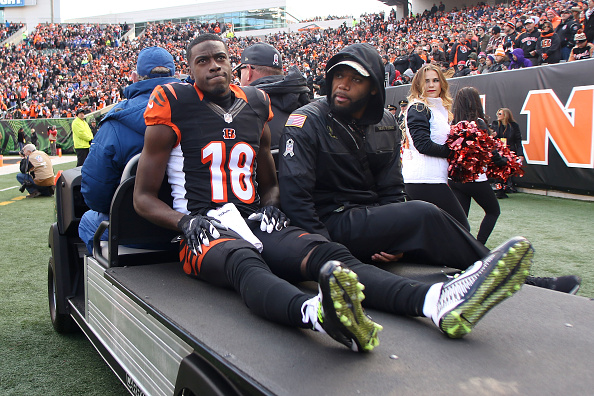In almost every case, NBA stars begin their careers honing their skills on cement. They spend their boyhood on blacktop and their adolescence on asphalt.
Proving yourself on the playground is typically the first step toward heroics on the hardwood. However, it doesn’t necessarily guarantee being drafted, signing a shoe contract, or going on to a Hall of Fame career. For every Lew Alcindor and Julius Erving, who were outdoor icons who went on to become legends, there are dozens of washouts and has-beens. Some others feel prey to either injury or addiction.
From Rucker Park in Harlem to The Cages in Chicago, hoops hopefuls have been dazzling onlookers with their eye-popping moves and dynamic dunks. It’s art in its purest form, filled with skill and stacked with colorful characters. Unfortunately, some of those personalities never got an opportunity to shine on the NBA stage.
Three Playground Stars Who Became Legendary Figures, But Never Played in the NBA
#1 – James ‘Fly’ Williams
Fly Williams may be the most eccentric of the blacktop bunch, and that’s really saying something. As a high school star in New York, he averaged more points than he had teeth, but his charisma made him unforgettable.
A 6’5″ silky, smooth shooter, Fly was said to have received his nickname from the Curtis Mayfield track, ‘Superfly’, and his game certainly matched the soul of the song. With his big hair and even bigger moves, the whispers on the streets eventually became shouts, and people from miles away were coming just to watch him perform his court magic.
To be fair, this list includes outdoor legends who never made it to the NBA, and Fly falls into that category. However, after a college career at Austin Peay, he did play for the St. Louis Spirits in the ABA, which likely fit his game better.
In the days when the National Basketball Association had a huge amateur selection process, Williams was drafted in the ninth round by the Philadelphia 76ers in 1976, but never suited up for them or any other franchise in the NBA.
Fly was eventually shot by an off-duty police officer, and he later was arrested for being part of a heroin ring – at the age of 64, no less. It was strange and sad, but also somehow fitting, in the way that this King of the Concrete will always be remembered. He may have been eccentric, and he may have been an outlaw. But man… did he have game.
#2 – Lamar ‘Money’ Mundane
#3- Earl ‘The GOAT’ Manigault
Perhaps the most legendary blacktop baller of all time, Earl Manigault‘s story was told on the big screen in the movie Goat, with Don Cheadle (in an early role) as Manigault. The film reflects the real-life and very sad set of events that befell the schoolboy star.
He found success very early on the streets of New York but also discovered the dangers there, as well. After starring at Benjamin Franklin High School and Laurinburg Institute, Earl would leave Harlem to play college basketball for Johnson C. Smith University in North Carolina. That’s where things would fall apart.
Culture shock, disciplinary problems, and squabbles with the coaching staff led him to leave school and return to New York after only one semester. While planning to re-enroll in college somewhere, he began using alcohol, marijuana, and (eventually) heroin.
Eventually riddled with drug addiction, Manigault would be jailed and eventually battle back from a serious addiction to Heroin. Close to death, he made a major life comeback and eventually returned to host basketball tournaments at Rucker Park. He became a leader in his community and an anti-drug spokesperson.
Perhaps his most lasting impression on the sporting world may also be his nickname, but it’s not totally clear. While it was believed that ‘Goat’ was derived from the pronunciation of Earl’s last name, some others have said it is the origin of the term, G.O.A.T. (Greatest of All Time).
It stems from an interview that Kareem Abdul-Jabbar when he set the NBA scoring record back in the 80s. He said that Manigault was the best player he had ever faced and referred to him by his animalistic nickname. It had reporters scrambling to trace Manigault’s story, which is what basically brought him back into the limelight and led to the movie.
Of course, that phrase is now used to describe excellence in all sports and genres. And that could very well all be because of a blacktop legend, Earl ‘The Goat’ Manigault.



